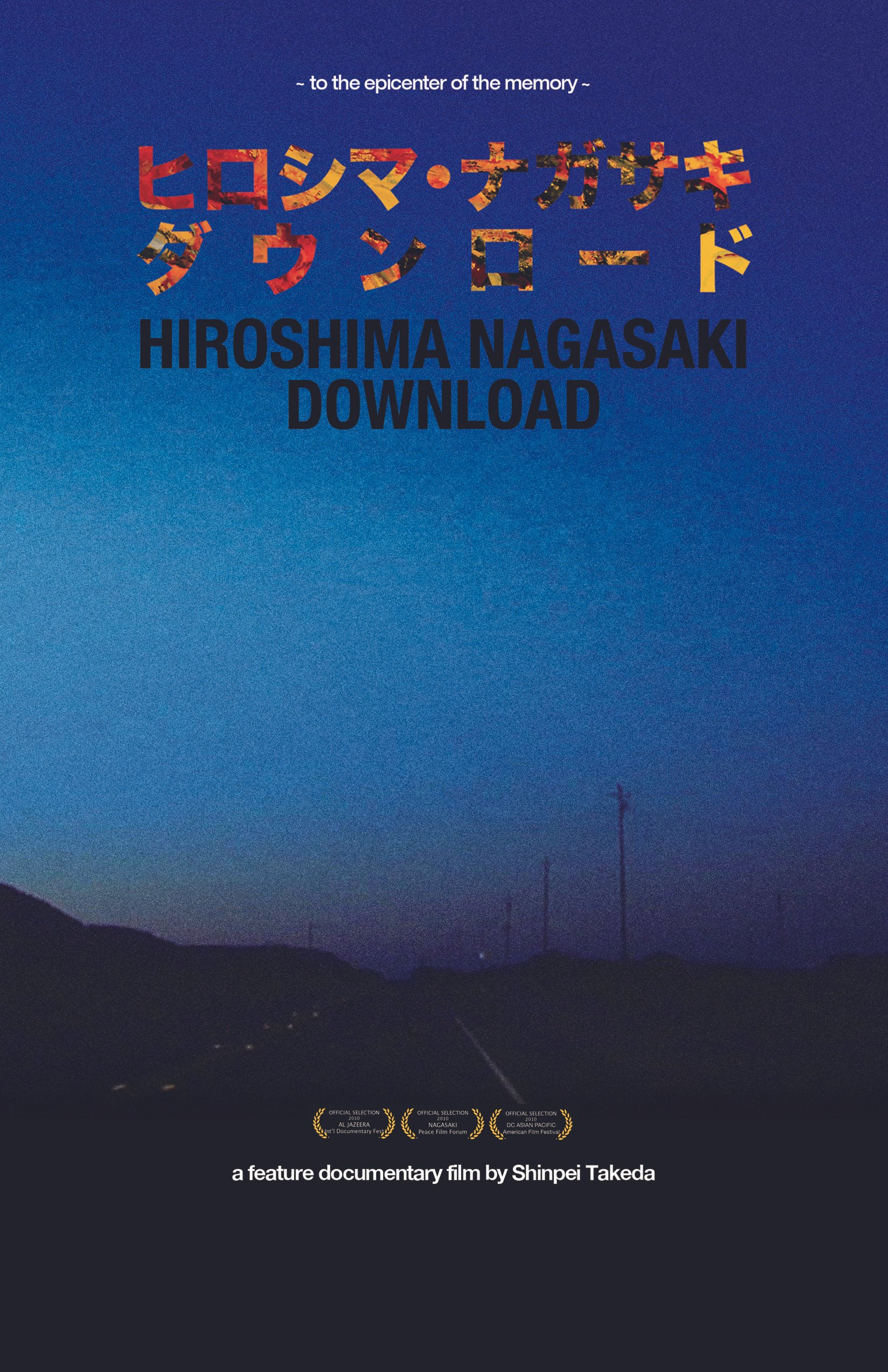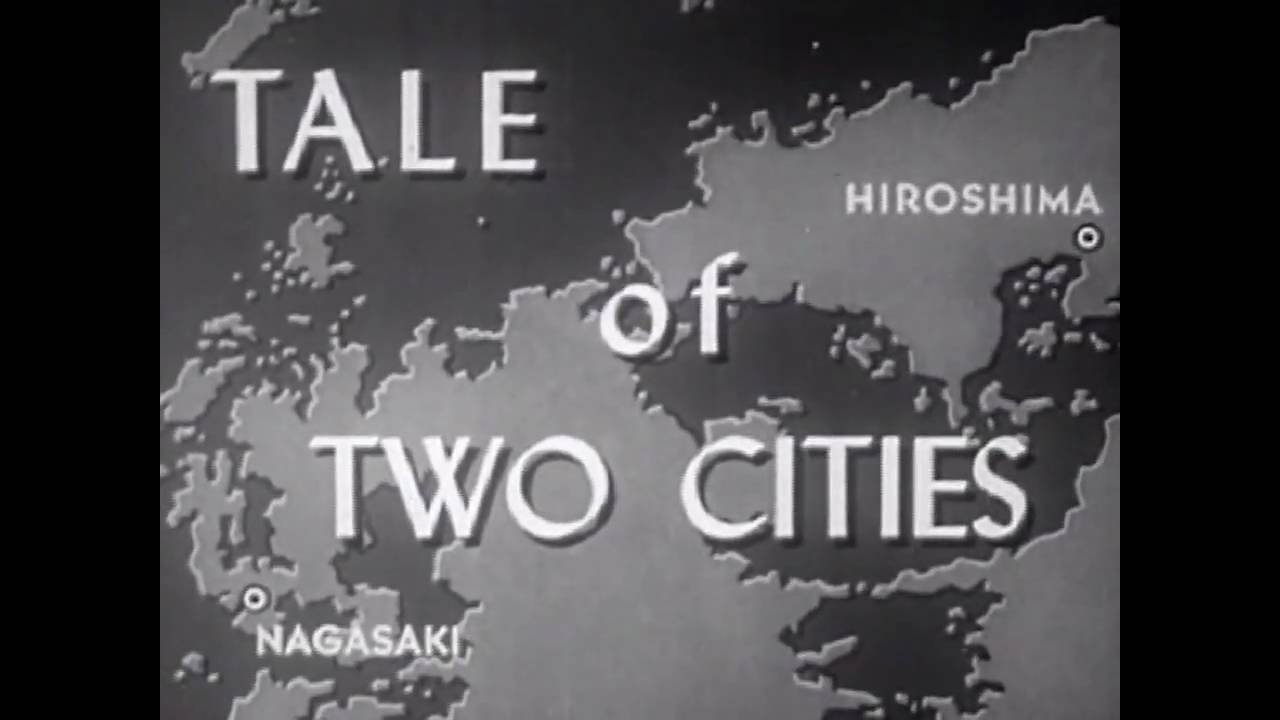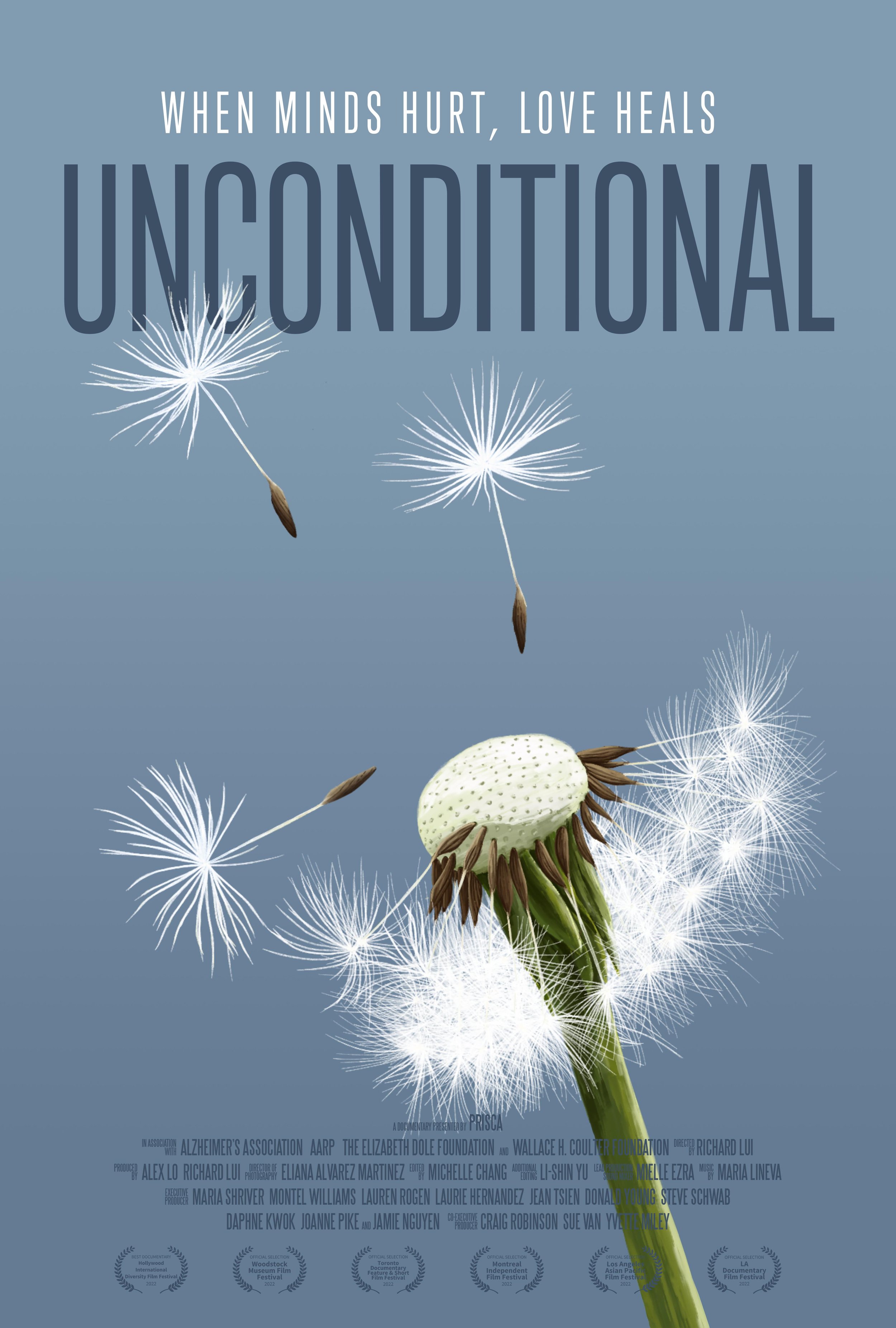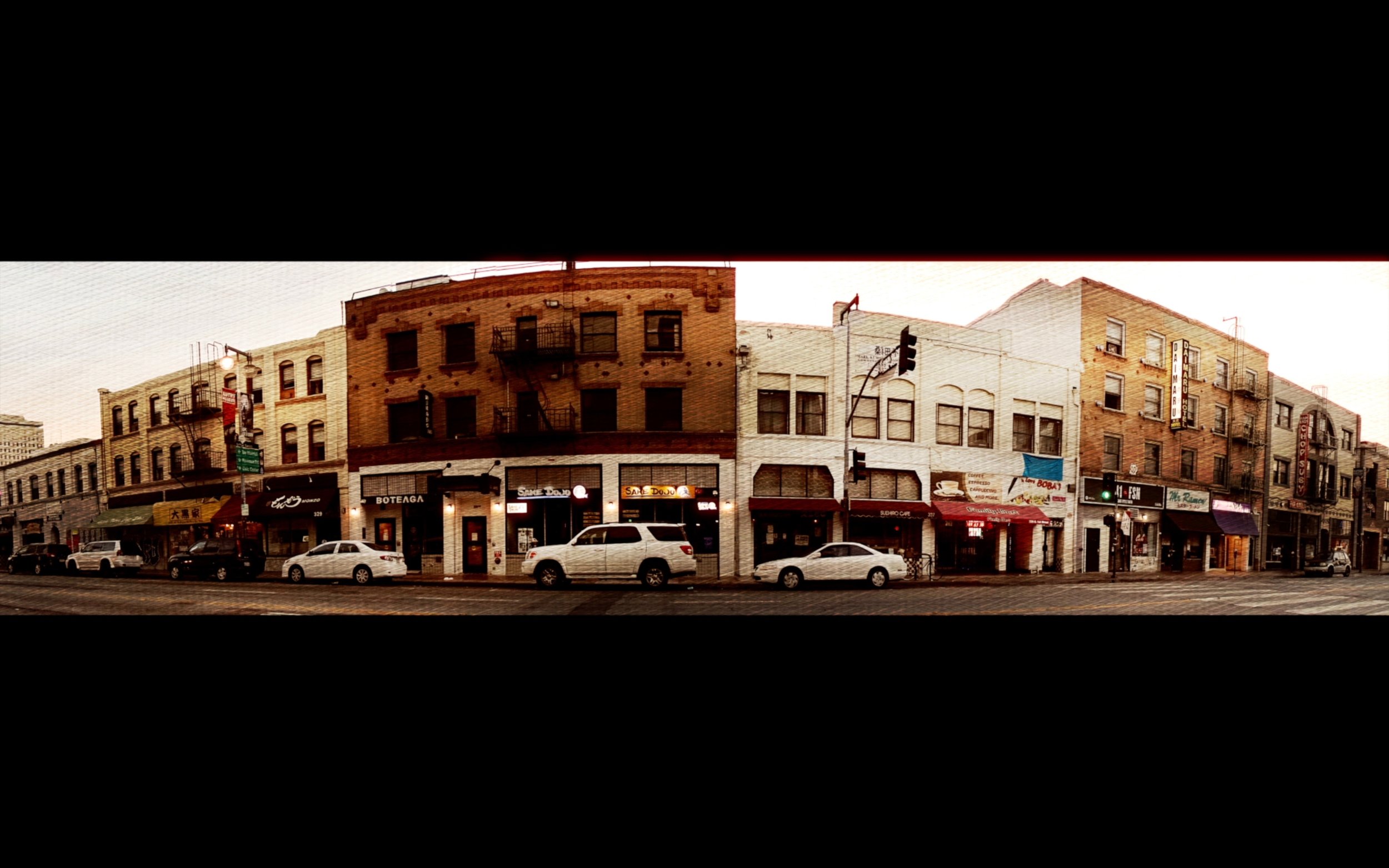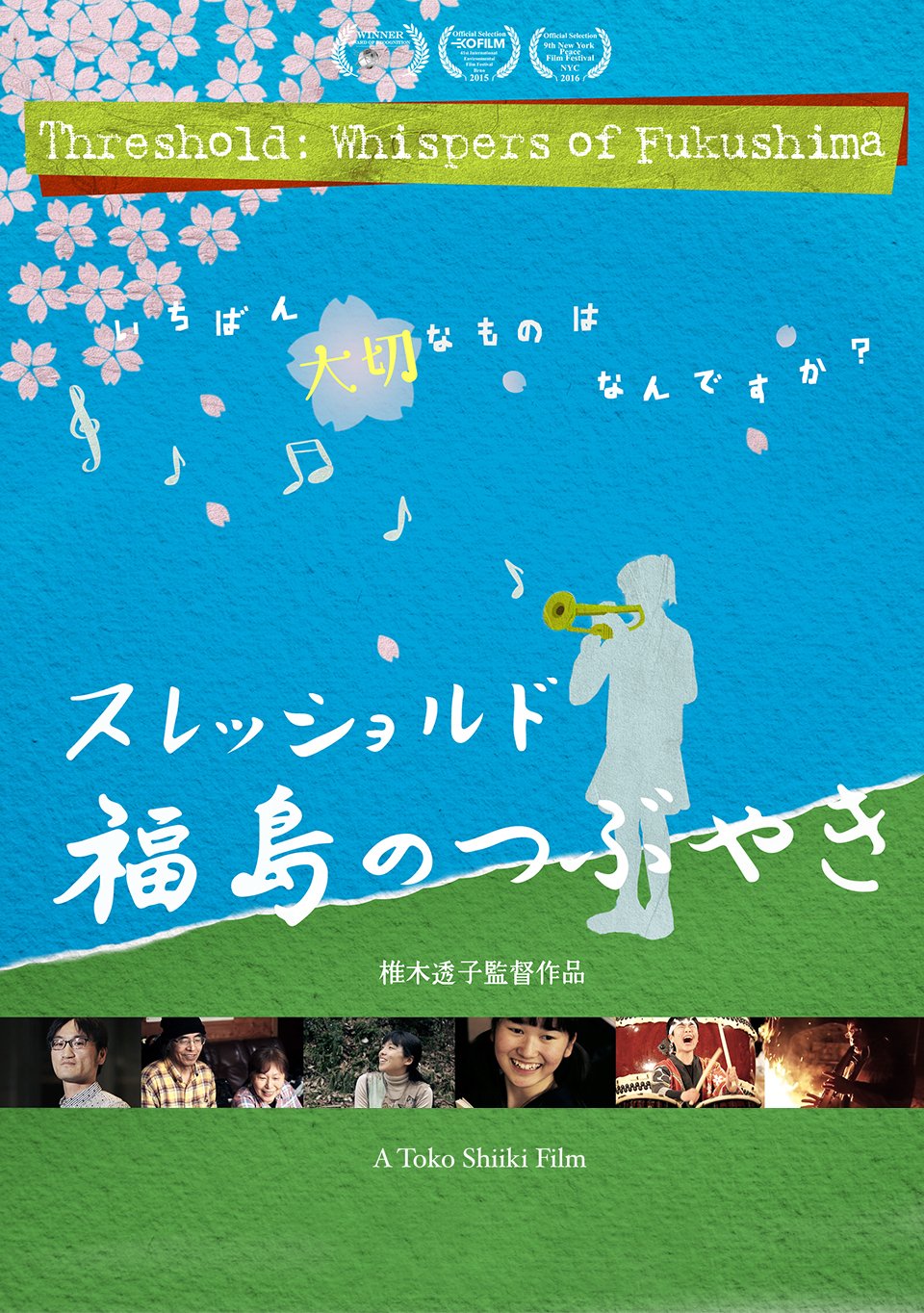
Tadaima! 2023 Film Festival
Click here for Film Festival Curator statement
CAMPS & MONUMENTS
Amache Rose
Dir. Billy Kanaly
30 mins | 2022
A rose grows in the high desert of Colorado, where it has no business growing. Planted 80 years ago by incarcerees of the Amache Japanese American incarceration camp.
Removed by Force
Dir. Ryan Kawamoto
57 mins | 2023
This documentary memorializes the unique and relatively unknown cases of about 1,500 Hawaiʻi Americans of Japanese Ancestry who were not imprisoned, but evicted from their homes during the war. These unique cases were separate and apart from the 2,000 Japanese Americans incarcerated at the Sand Island and Honouliuli (Oʻahu) prison camps. It is a little-known and important story about Hawaiʻi AJAs which adds to the overall history of Japanese American experience during WWII. In particular, the documentary chronicles the forced removal of Hawaiʻi AJAs in 23 geographic areas, and the pursuit of the related legal cases with the U.S. Department of Justice. Personal interviews and stories of their quest for redress from Honolulu JACL lawyers, volunteers and AJAs evicted is the main theme of the video. It is an inspiring story that provides great insight about community organizing, advocacy, and the role of both JACL National and Honolulu chapter.
Moving Walls
Dir. Sharon Yamato
25 mins | 2017
Moving Walls tells the story of what happened to the scores of barracks used to house 125,284 Japanese Americans during WWII. At one camp built on government land in a remote area in Wyoming, they were sold for a dollar apiece to homesteaders. The story delves into the intersection of the mass detention and homesteading farmers and is told from the dual perspective of those taken from their homes and forced to live in these shoddily constructed buildings during wartime and those who voluntarily chose to start new lives in them after the war, i.e., the American nightmare that became the American dream. At a time when race and ethnicity continue to raise questions about issues surrounding immigration and civil rights, the film examines the mass detention through interviews with former incarcerees who returned to the West Coast as well as homesteaders who live in the buildings today in the heart of middle America.
80 Years Later
Dir. Celine Parreñas Shimizu
50 mins | 2022
On the 80th anniversary of Executive Order 9066 that imprisoned Japanese Americans in World War II, such families continue to grapple with the legacy of their experience. Through multigenerational conversations with survivors and their descendants, 80 YEARS LATER explores the racial inheritance of Japanese American family incarceration during World War II. The film follows two cousins, Kiyo and Robert, respectively a teenager and child living in the San Francisco Bay Area in 1942 when Executive Order 9066 – which forcibly imprisoned 120,000 Japanese Americans in World War II – was signed. Eighty years later, the cousins continue to grapple with the meaning of their incarceration and its impact on their lives, ancestors, and descendants.
Jimmy Murakami: Non Alien
Dir. Sé Merry Doyle
90 mins | 2010
A documentary blending animation to tell the emotional return of Japanese American artist and filmmaker Jimmy Murakami, a resident of Ireland, as he returns to the Tule Lake concentration camp in California.
Legacy Voices
Dir. Robert Horsting
11 mins | 2020
Seven Nikkei veterans spanning the Korean, Vietnam, and Gulf Wars discuss the legacy of the Japanese American WWII veterans and the importance of the Japanese American National War Memorial Court. The memorial court is the only place in the nation listing the names of all Nikkei whose lives were lost in military service to the United States of America, the first of these taking place during the Spanish-American War in 1898.
Blue Garden
Dir. Natalie Murao
5 mins | 2022
“Why have I never liked tomatoes?” A simple question leads a fourth-generation Japanese Canadian to explore her own family’s history in the incarceration camps, unspoken history of trauma, and hopefully lead to healing in this hybrid animated documentary.
Out of Infamy: Michi Nishiura Weglyn
Dir. Sharon Yamato, Nancy Kapitanoff
18 mins | 2010
'Out of Infamy: Michi Nishiura Weglyn' profiles the renowned Japanese American activist and author of 'Years of Infamy: The Untold Story of America's Concentration, painting a portrait of her dynamic personality, which evolved via incarceration in the Gila River, Arizona camp from California-born farm girl to costume designer for the Perry Como Show to the Rosa Parks of Japanese Americans.
A Song For Manzanar
Dir. Kazuko Golden
16 mins | 2015
Based on a true story, A SONG FOR MANZANAR is based on one chapter of a forthcoming novel written by author and educator Yosh Golden. It is set in 1945 Manzanar Japanese American Internment Camp and is about a young mother, Sachie, who is driven to instill hope in her playful son while try to communicate with her sister Hiroko who still lives in Hiroshima. Although not physically together, the sisters write letters to each other and through the Japanese childhood folk song, 'The Crow' they maintain hope that one they will be reunited. The film is by Yosh's daughter Kazuko Golden and is about her mother Yosh who was born in Manzanar and her grandmother Sachie, the main protagonist in the film.
JAPANESE & NIKKEI PERSPECTIVES ON THE ATOMIC BOMB
Hiroshima
Dir. Hideo Sekigawa
85 mins | 1953
Hiroshima is a 1953 Japanese docudrama film directed by Hideo Sekigawa about the atomic bombing of Hiroshima and its impact. It tells the story of a group of teachers, their students, and their families in the years after the bomb. In a flashback sequence, tens of thousands of extras from Hiroshima, many of them survivors, helped recreate the "hellscape" immediately following the bombing. The film was based on the eye-witness accounts of the bombing's child survivors compiled by Dr. Arata Osada for the 1951 best-selling book Children Of The A Bomb: Testament Of The Boys And Girls Of Hiroshima (Genbaku no ko).
The Mushroom Club
Dir. Steven Okazaki
35 mins | 2005
A Japanese American filmmaker's journey to Hiroshima, sixty years after the bomb. The film explores the remembrance and activism of Hibakusha - or atomic bomb survivors.
White Light / Black Rain
Dir. Steven Okazaki
86 mins | 2007
Using extensive interviews with survivors and archival footage, an examination reveals the aftermath of the atomic bombing of Hiroshima and Nagasaki.
Hiroshima Nagasaki Download
Dir. Shinpei Takeda
72 mins | 2011
Two former high school friends drive from Canada to Mexico as they visit atomic bomb survivors from Hiroshima and Nagasaki that live in the States. During the trip, they record the piece of a modern history crucially important in Japanese collective psyche while exploring their own identities and revealing the reality of psychological scars.
Pecoross’ Mother and Her Days
Dir. Azuma Morisaki
113 mins | 2013
Yuuichi Okano is a baby boomer born and raised in Nagasaki, Japan. His bald-head looks like a pecoross, a small onion. His Mother, Mitsue has dementia that began soon after her husband, Satoru, passed away 10 years ago. The film depicts their daily life that is full of humor and sweet sorrow, as Mitsue relives memories from throughout her life – including the atomic bombing. The film explores themes related to end-of-life care, dementia, and family caregiving - serious social issues among Japan’s rapidly aging population.
Effects of the Atomic Bomb on Hiroshima and Nagasaki
US Strategic Bombing Survey
164 mins | 1946
Completed under the auspices of General Headquarters by United States Strategic Bombing Survey (Motion Picture Project) with the assistance of G-2, Naval Technical Mission to Japan and the Surgeon General's Office. A cinematographic record made by the Nippon Eiga Sha of studies made by the Special Commission of the Natural Research Council of Japan. Photography and recording by the Nippon Eiga Sha staff.
Ten Seconds That Shook the World
Dir. Alan Landsburg
52 mins | 1963
This documentary presents a chronological account of the events preceding the atomic bombing of Hiroshima during World War II. It is a historical overview of the atomic process that began with the scientific developments of Einstein and Madame Curie, and Fermi's successful splitting of the atom.
Tale of Two Cities – Hiroshima-Nagasaki
US War Department
13 mins | 1949
A Tale of Two Cities is a 1946 propaganda film about the atomic bombings of Hiroshima and Nagasaki, produced by the Army-Navy Screen Magazine.
ARTS & CULTURE
The Oath of the Sword
Dir. Frank Shaw | 31 mins | 1914
The Oath of the Sword tells the story of young lovers separated as the ambitious young man, Masao, leaves his lover Hisa to study abroad at the University of California, Berkeley. Masao becomes a success at the university, a popular student and a star athlete who dominates in track and swimming competitions. Left to care for her ailing father and unable to cope with her solitude, Hisa eventually betrays Masao and marries another man. Upon Masao’s return to his native Japan, Hisa fulfills “the oath of the sword” (katana) and kills herself. Following the conventions of Madame Butterfly, in which a tragic interracial romance ends with suicide, the character Hisa is the fallen Japanese woman fulfilling her seemingly inevitable destiny by ending her life.
Considered lost until its discovery in 2016 by film scholar Denise Khor, The Oath of the Sword was produced in 1914 by a company described by Moving Picture World as the “first company in America to be owned, controlled and operated by Japanese.” Based in Los Angeles, the Japanese American Film Company was among several similar independent film companies established by Japanese immigrants during a period when the American film industry had yet to become Hollywood as we know it. The Oath of the Sword is the earliest known Asian American film production and illuminates a largely unknown chapter in American film history. – Denise Khor, Northeastern University
The Shokudo Series
Dir. Luke Uyeda
Various | 2022
Jon Okeya is an artist by day and a curious chef by night. With his friends Luke Uyeda the videographer and Michael Murata the musician, Jon has built a secret backyard diner called “The Shokudo”. By learning family recipes and cooking the foods that have defined their unique culture, this motley crew of fourth generation Japanese Americans are on a journey to learn about and preserve their culture and community history by documenting family stories before they are lost to time.
George Nakashima, Woodworker
Dir. John Nakashima
120 mins | 2021
George Nakashima died in 1990, but his influence and the appeal of his work remains strong today. His most groundbreaking works feature thick slabs of hardwoods—with complex grain and nature’s “imperfections”—boldly finished and stabilized with perfected joinery. His simpler designs of nuanced beauty are equally respected. Nakashima spent his life until his mid-thirties immersed in the new Modern Architecture, absorbing Shinto and Zen aesthetics and working/studying in a legendary Indian ashram. His life’s work sprang from these layers of experiences, knowledge, and skills. To purchase your own copy of the film on DVD please visit nakashimadocumentary.com
Sincerely, Miné Okubo
Dir. Yuka Murakami
16 mins | 2021
Short biographical film on the artistic span and career of Miné Okubo, a Japanese-American artist who is best known for her graphic memoir Citizen 13660 (1946), which chronicled the WWII incarceration.
Mrs. Judo: Be Strong, Be Gentle, Be Beautiful
Dir. Yuriko Gamo Romer
66 mins | 2012
This film documents the life-long journey of Keiko Fukuda’s decision to defy thousands of years of tradition, choose her own path, and become the highest-ranking woman in judo history.
Once in a long while, the life destiny of one woman lines up to make a radical shift for women around the world. On July 28, 2011 Keiko Fukuda broke through a glass ceiling for women when she was awarded the pinnacle of judo, the 10th degree black belt. Fukuda is the first and only woman to hold this honor. Fukuda Sensei passed away on February 9, 2013. She was 99 years old, and had taught judo in San Francisco until just before her death. She was last disciple of judo’s founder, Jigoro Kano.
A Song For Ourselves
Dir. Tad Nakamura
34 mins | 2009
A SONG FOR OURSELVES is an intimate journey into the life and music of Asian American Movement troubadour Chris Iijima. Struggling to make sense of their father’s early death, his teenage sons learn that during the 1970s when Asians in America were still considered “Orientals,” Chris’ music and passion for social justice helped provide the voice and identity an entire generation had been in search of. Through animated photographs, intimate home movies, archival footage of Chris’ introduction to nationwide television by John Lennon and Chris’ own songs, their father’s life takes on bigger meaning than they had ever dreamed of.
Giant Robot: Asian Pop Culture and Beyond
Dir. Dylan Robertson, Dennis Nishi
57 mins | 2023
Giant Robot was a bimonthly magazine that created an appetite for Asian and Asian American pop culture, exploring Sawtelle Boulevard as a Japanese American enclave. Founded in 1994 and driven by Eric Nakamura and Martin Wong, it resulted in a legacy of Asian American artists that achieved worldwide recognition such as David Choe and James Jean.
The Medium is the Message
Dir. Derrick Woodyard
15 mins | 2023
Honoring the past, celebrating the present, and paving the way for the future. Puma celebrated AAPI Heritage Month 2023 by collaborating with Asian American street fashion icon Jeff Staple to release a collection based on Gidra – the Asian American activist zine. This mini documentary focuses on a conversation between Staple and one of Gidra’s founding members Mike Murase about the history of AAPI activism.
Kakehashi
Dir. Andrew Gooi
29 mins | 2017
A Japanese chef bridges the gap between Japan and the rest of the world with his cuisine. Featuring James Beard Award-winning chef Nobuo Fukuda.
ADVOCACY & SOCIAL ISSUES
Wisdom Gone Wild
Dir. Rea Tajiri
84 MINS | 2022
Wisdom Gone Wild tells the remarkable story of filmmaker Rea Tajiri’s mother, a Nisei woman who survived incarceration in an American concentration camp during World War II, and grew up as the daughter of sharecroppers in California's strawberry fields. Later in life, Rose developed dementia. Through interactions with Rea, her daughter and care partner, she bestows a new name and identity on herself, transforming her past along with her present. In its form and content, the film centers her perspective rather than a disease, telling the story of a life to be valued, not a problem to be willed away. It calls for a societal shift in how we view dementia—one that honors subjective experience, cultural difference, inclusivity, and personhood, to counter the devaluing of age and the dismissal of the knowledge we can gain from someone who has lived a long life, which may be shared through a different lens and perhaps a new language, a wisdom gone wild.
Unconditional
Dir. Richard Lui
88 mins | 2023
Unconditional is a revealing film about the importance of mental health for those living with a disability. It is a film that shows us how mental health is not what we think it is. It is not only the polar extremes of what the media often describes it to be. It comes in hundreds of shades and in places we do not notice.
The Fourth March
Dir. Robert Shoji
8 mins | 2022
Many are familiar with the three civil rights marches (collectively known as the Selma to Montgomery marches) that happened in Alabama in March of 1965. There was however a fourth march with Martin Luther King Jr. and a young 21-year-old Japanese American activist. This fourth march has been forgotten by time.
Blasian Narratives
Dir. Jivan Atman
51 mins | 2017
Blasian Narratives is a multimedia project that intimately explores the intersection and identities of mixed race Black & Asian individuals through live performances and film. The project began as a collaboration between Morehouse and Spelman College students documenting and exploring the identity formations of individuals with mixed Afro-Asian heritage, colloquially known as “Blasians.” The grassroots project aims to bring historically polarized communities together by illustrating the complexities and unity of identity awareness–how you see yourself vs how you are seen–in hopes of building solidarity along the way.
Lil Tokyo Reporter
Dir. Jeffrey Gee Chin
30 mins | 2012
Sei Fujii was a crusading reporter for a newspaper in Los Angeles' Little Tokyo section in 1935. Concerned that the exploitation of the poor by local gambling concerns would not only hurt the community directly, but would also sabotage the efforts to make the rest of Los Angeles accept the Japanese of Little Tokyo as loyal and trustworthy Americans, Fujii sets out to bring the power of the press to play against the gambling houses.
This film will be screened on Friday, October 27 as part of the Breathing Life into our Civil Rights Leaders: From Films, Designations, Books, and Graphic Novels panel.
POSTWAR JAPANESE AMERICAN COMMUNITY HISTORY
Hito Hata: Raise the Banner
Dir. Robert Nakamura, Duane Kubo
90 mins | 1980
A landmark project, HITO HATA: RAISE THE BANNER is the first feature-length film made by and about Asian Pacific Americans. Capturing the contributions and hardships of Japanese Americans from the turn-of-the-20th century, the film centers on Oda (the late veteran actor/director Mako), a feisty issei (first generation Japanese American) and elderly single laborer living in Los Angeles’ Little Tokyo. Through a series of flashbacks, the story traces Oda’s life as a laborer on the transcontinental railroad to his struggle to save the home of Little Tokyo’s residents when the community is threatened with redevelopment. An epic Japanese American drama, HITO HATA draws on the talents and support of Asian American filmmakers, writers, theater professionals and literally hundreds of people from the Asian Pacific American community who served as extras, provided locations, props, and moral as well as financial support. The production represents the full measure of Visual Communications’ pioneering work.
Yellow Brotherhood
Dir. Tad Nakamura
18 mins | 2003
YELLOW BROTHERHOOD is a short personal documentary about a friendship and finding community through a self-help group turned basketball team that began in the 1960s. Filmmaker Tad Nakamura met Brett and Khi-Min when they were six years old on a community basketball team called the ‘Venice YB’. As Tad says in the film, ‘We didn’t know what YB stood for and we really didn’t care – all we cared about was having fun.’ As they grew, they learned that YB stood for ‘Yellow Brotherhood’, a self-help group formed by a gang called ‘The Ministers’ to help youth get off drugs. Only later did they realize how the tradition of Yellow Brotherhood’s dedication to personal and political development helped them through their own problems and empowered them to carry on its legacy of creating and serving the community. Features never-before-seen stills and footage of Los Angeles’ Japanese American community in the 1960s and 1970s.
Breakfast at Tak’s
Dir. Tad Nakamura
11 mins | 2006
Breakfast at Tak's is a small project on one of filmmaker Tad Nakamura’s favorite places to eat in LA. As a Japanese American growing up on the westside, one of his favorite childhood memories is ordering fried rice at the Holiday Bowl and wondering how they get the rice in a perfect mound. While the Holiday Bowl has been long gone, its legacy still lives on at Tak's Coffee Shop.
Holiday Bowl
Dir. Mitchell Matsumura
9 mins | 2018
The Holiday Bowl was a gathering place for a community and a generation. Where all peoples came together in urban Los Angeles. Regardless of the tensions of the times they triumphed. Our hang out, bowling leagues, the famous coffee shop, cocktail bar, pool hall, arcade, our home away from home. The community celebrated its opening in 1958 until it closed in disbelief in 2000.
Japanese American Legacy on Wheels
Dir. Mitchell Matsumura
8 mins | 2019
Japanese American Legacy On Wheels is dedicated to the passion and history of those that started it all. They helped drive the American muscle car era and the Japanese import tuner era to what it is today.
The Carry On Story
Dir. Mitchell Matsumura
12 mins | 2023
Carry On was a garage band in Los Angeles during the Asian American dance era 1965-1985. The era was a right of passage and undoubtedly the best times of our lives. Carry On was the most popular band of the era. They performed at hundreds of dances held at dance halls and ballrooms. This is their story.
Gone
Dir. Robert Shoji
6 mins | 2019
We often don’t appreciate what we have until it’s GONE. This film looks at present day Little Tokyo and the changes taking place. The question: Will we stand by until Little Tokyo is GONE, or will we stand up and fight for the future of our community?
Wataridori: Birds of Passage
Dir. Robert Nakamura
37 mins | 1976
Three issei (first generation Japanese Americans) describe a collective history through personal memories. Miura, a fisherman and wanderer, came to America by ship as an apprentice steward to see the world. The director’s father, Harukichi, a gardener, remembers the little boys who taunted him as he bicycled from his job with a lawnmower tied to his back post World War II. Through Mrs. Sumi, we learn how issei farmers developed the prosperous Imperial Valley farmlands despite the Alien Land Law. In a moving scene, several issei talk about the World War II evacuation. And in one pilgrimage, three generations pay tribute to lives spent at Manzanar concentration camp.
My Immigrant Story
Dir. Yuriko Gamo Romer
3 mins | 2018
With immigration such a hot button issue, filmmaker Yuriko Gamo Romer shares her own path to American citizenship. Just thirteen years after Japan's surrender of WWII, her family packed up everything and moved to the U.S. in response to Russia's launch of Sputnik.
Floating Light
Dir. Natalie Murao
12 mins | 2017
After being forced to return early from summer camp, Dana and Sam are planted in the midst of their recently late grandfather's Buddhist funeral ceremony.
JAPAN CONNECTIONS
Kiku and Isamu
Dir. Tadashi Imai
117 mins | 1959
Immediately after the Second World War, sister Kiku and brother Isamu, whose mother was a prostitute and the father was a GI, lived with their grandmother in the country. Because their skin color and hair differed from typical Japanese, they experienced bullying in their rural village. Raised by their grandmother, Kiku struggles to find her place in society, while looking out for her younger brother.
One Day We Arrived in Japan
Dir. Aaron Litvin, Ana Paula Kojima Hirano
80 mins | 2017
An intimate documentary spanning 10 years and 10,000 miles, One Day We Arrived in Japan reveals how people's dreams and expectations stand up to a grueling new reality on the other side of the world. Three Brazilian families leave their homeland in pursuit of a better life in Japan -- what will happen to each of them? Over the past 25 years, hundreds of thousands of Brazilians of Japanese descent have gone to Japan to work. This unique documentary brings to light the gripping personal stories behind a major transnational phenomenon.
Shizue
Dir. Nadine Patterson
17 mins | 1991
Emiko Tonooka, a Nisei American woman (second generation Japanese American born on U.S. soil), traveled to Japan in 1986 to find her unknown half-sister, Shizue. Through storytelling, photography and carefully choreographed video work, a powerful portrait of family emerges. Screened at the Museum of Modern Art, NY in "Consumer Tools, Personal Visions".
Friend Ships
Dir. Yuriko Gamo Romer
5 mins | 2010
Through the whimsical animation of soft puppets, this short film brings to life the historical tale of Manjiro - a fourteen year-old boy who became one of the first Japanese to set foot in America after being shipwrecked and rescued by an American whaling ship.
Threshold: Whispers of Fukushima
Dir. Toko Shiiki
90 mins | 2015
This documentary focuses on how several individuals from Fukushima have decided to live fully in the wake of the 2011 Fukushima Daiichi Nuclear Power Plant Disaster. Filmmaker Toko Shiiki traveled to Fukushima, from the US, in order to hear stories directly from the local people, not just from the media. Through intense conditions and confusion, many of them have developed a new lifestyle, in their own way. Some of them left Fukushima, others stayed, but no matter where they chose to be, these people haven't lost their bright spirits. They live fully, in the now. Moreover, they stay alive by keeping in touch with what they love most - music. Their life stories and powerful music intertwine, revealing the essence of living, and encouraging us to consider fundamental questions about our own humanity.













